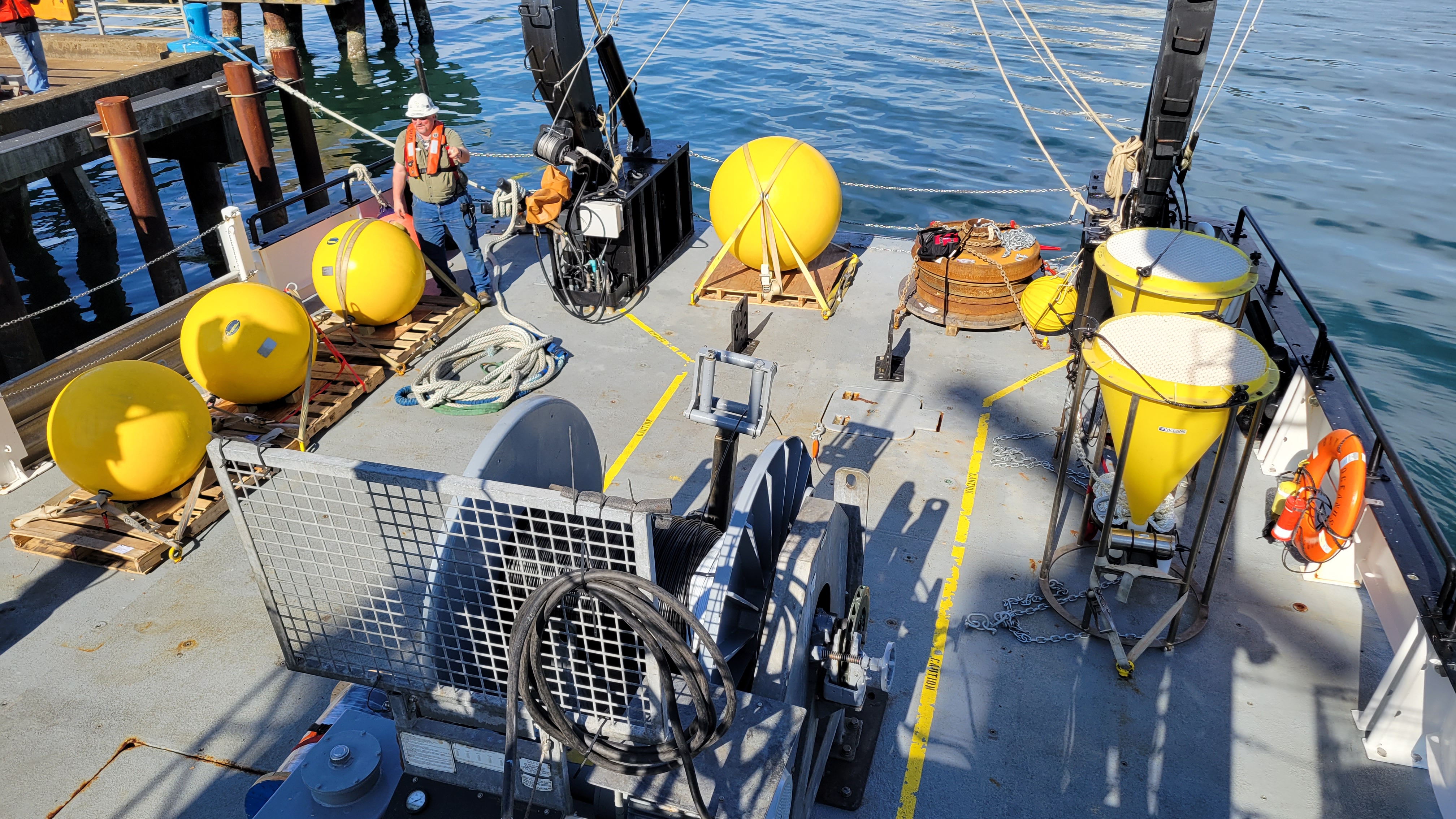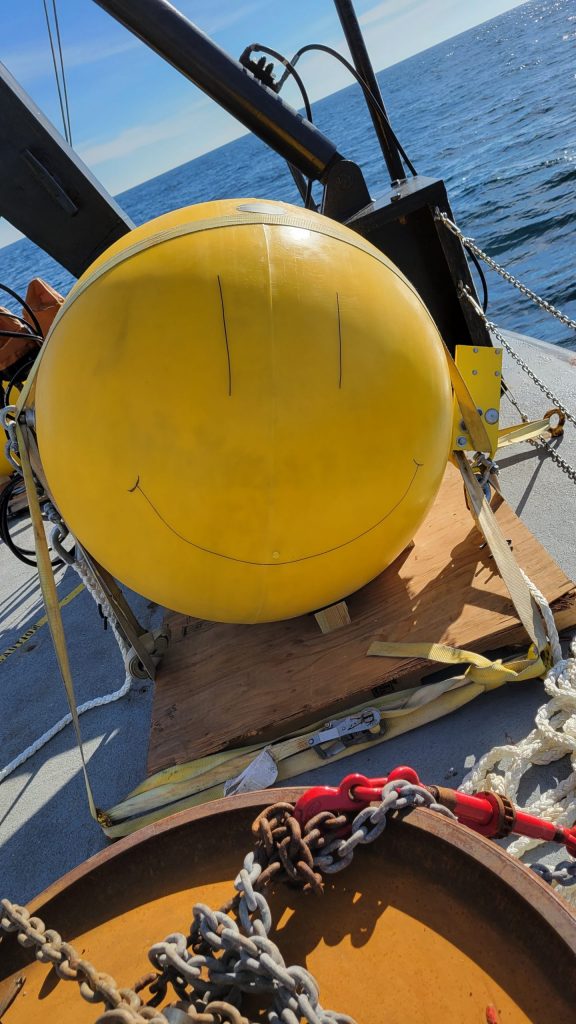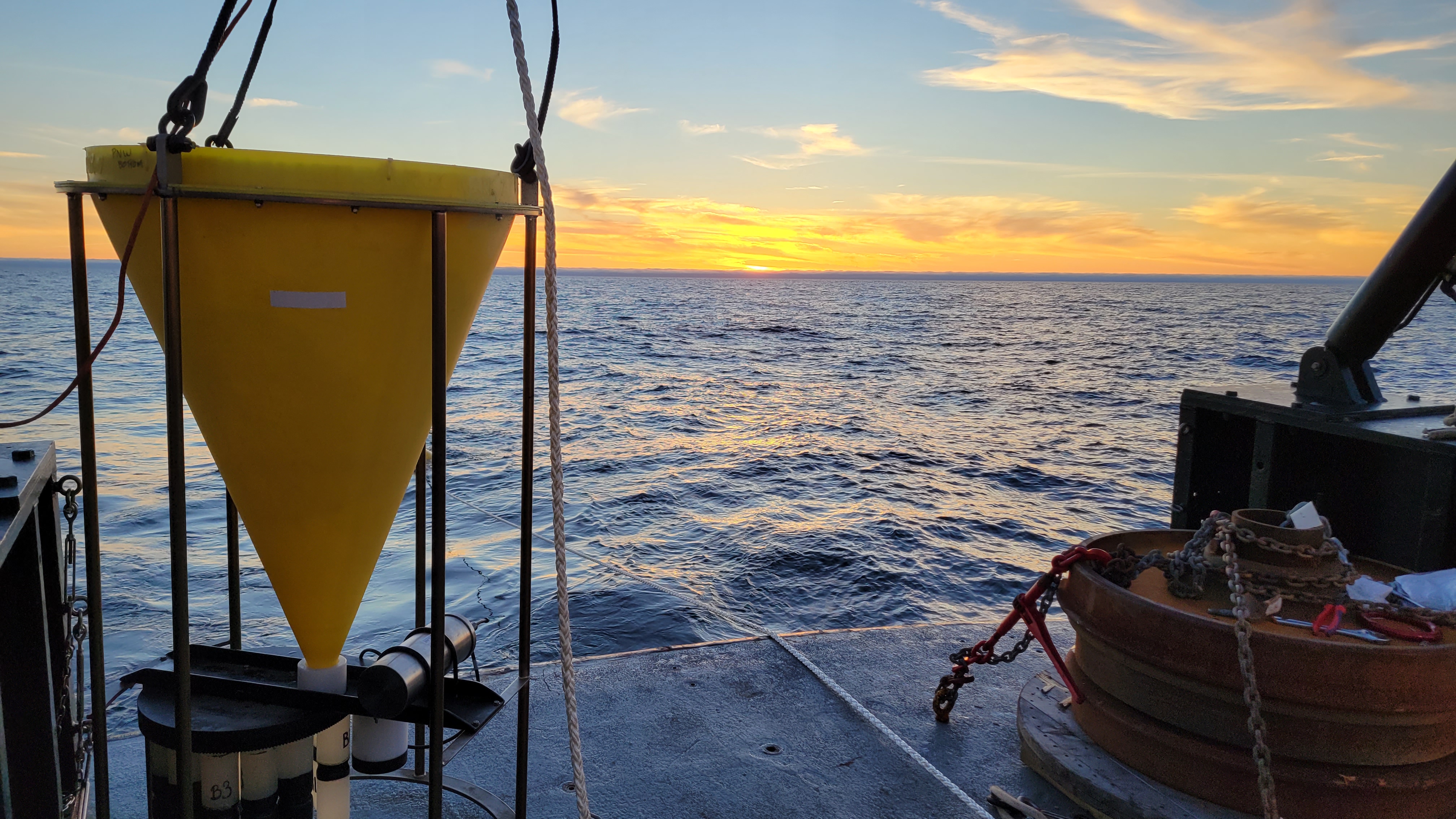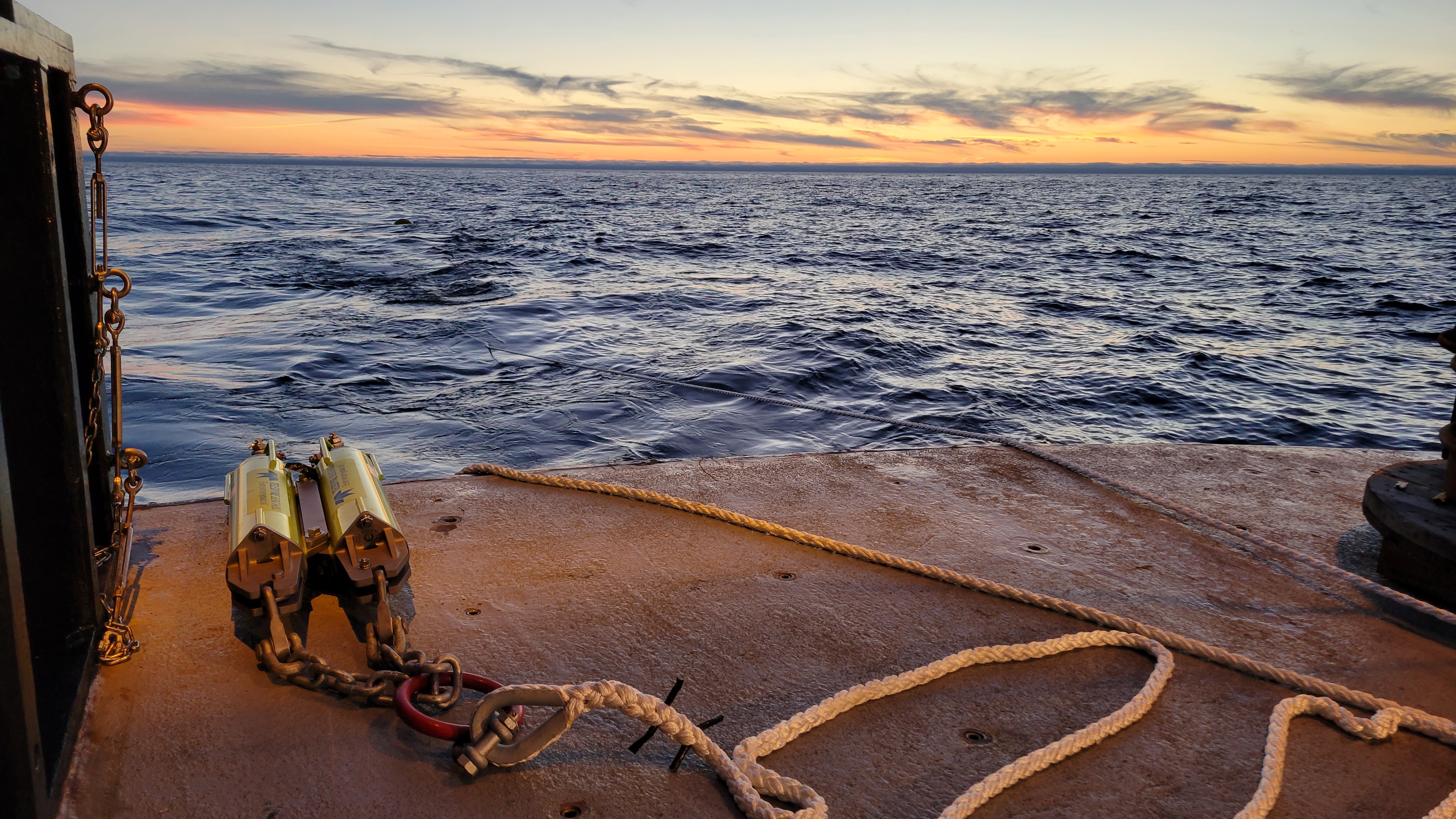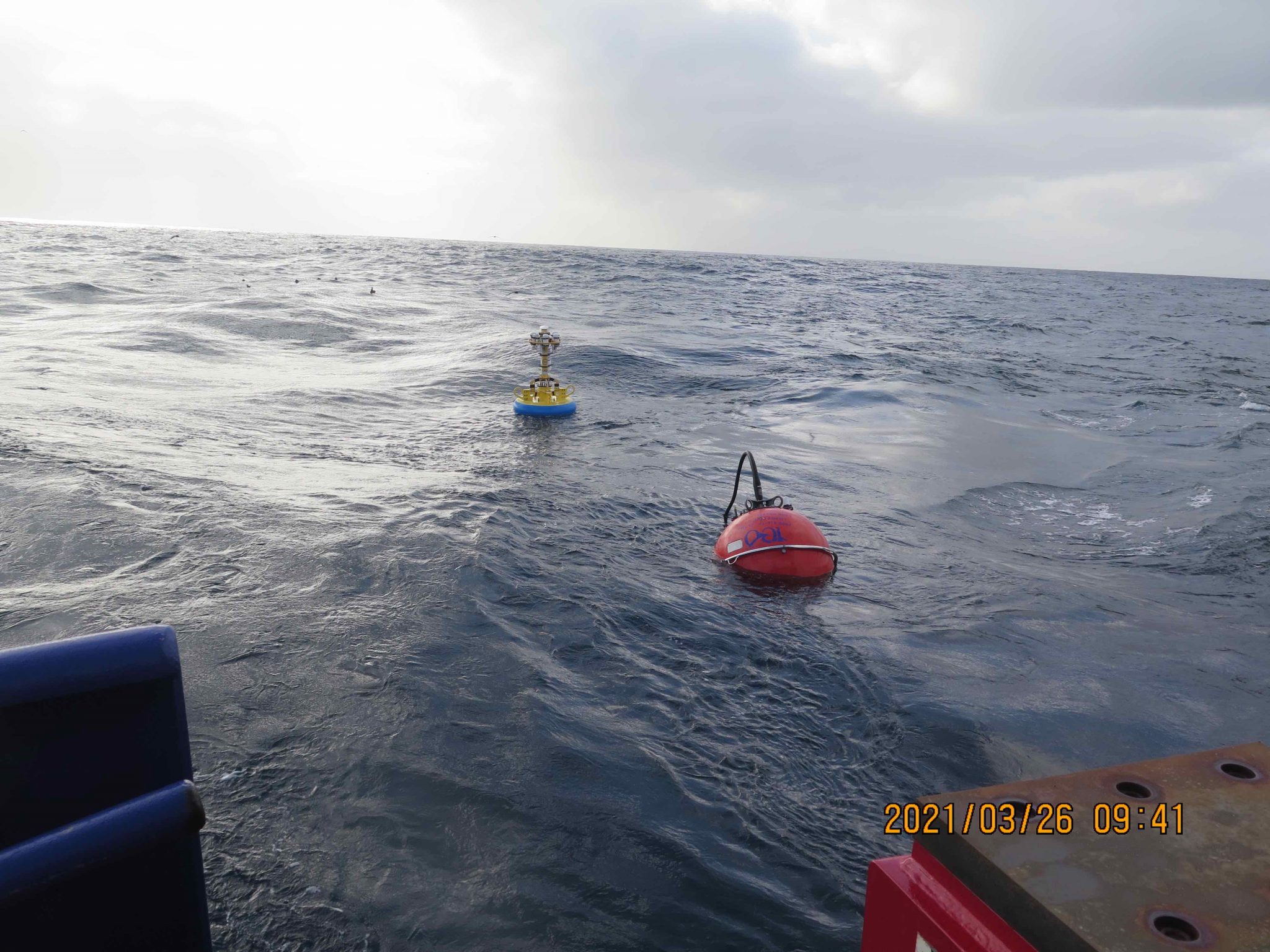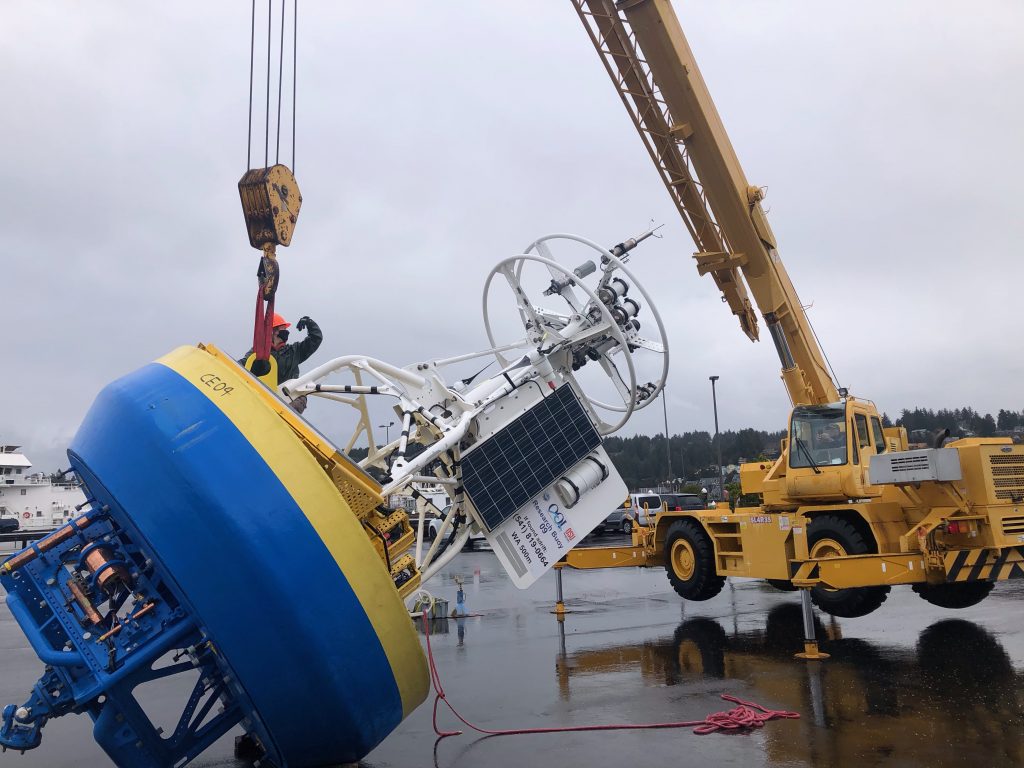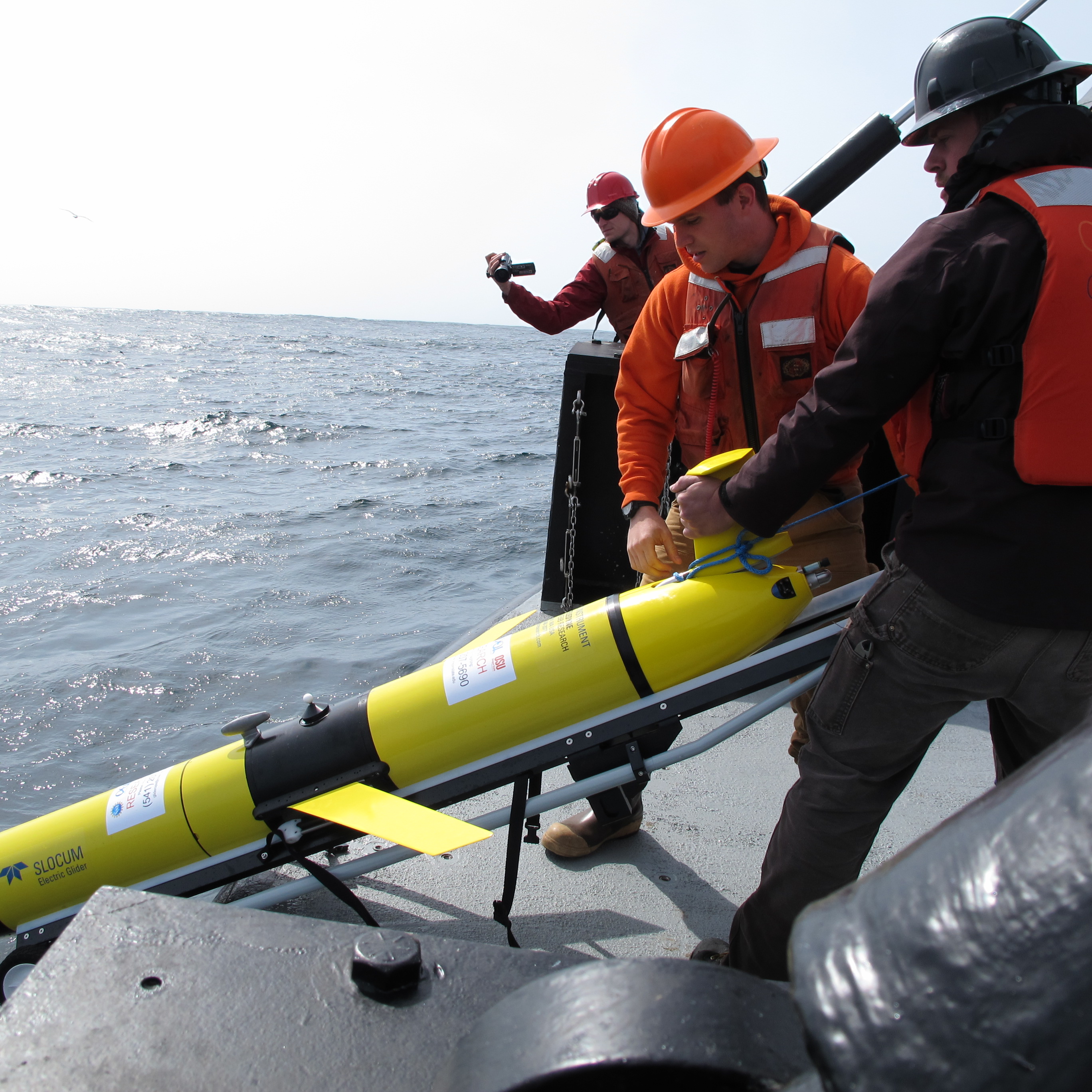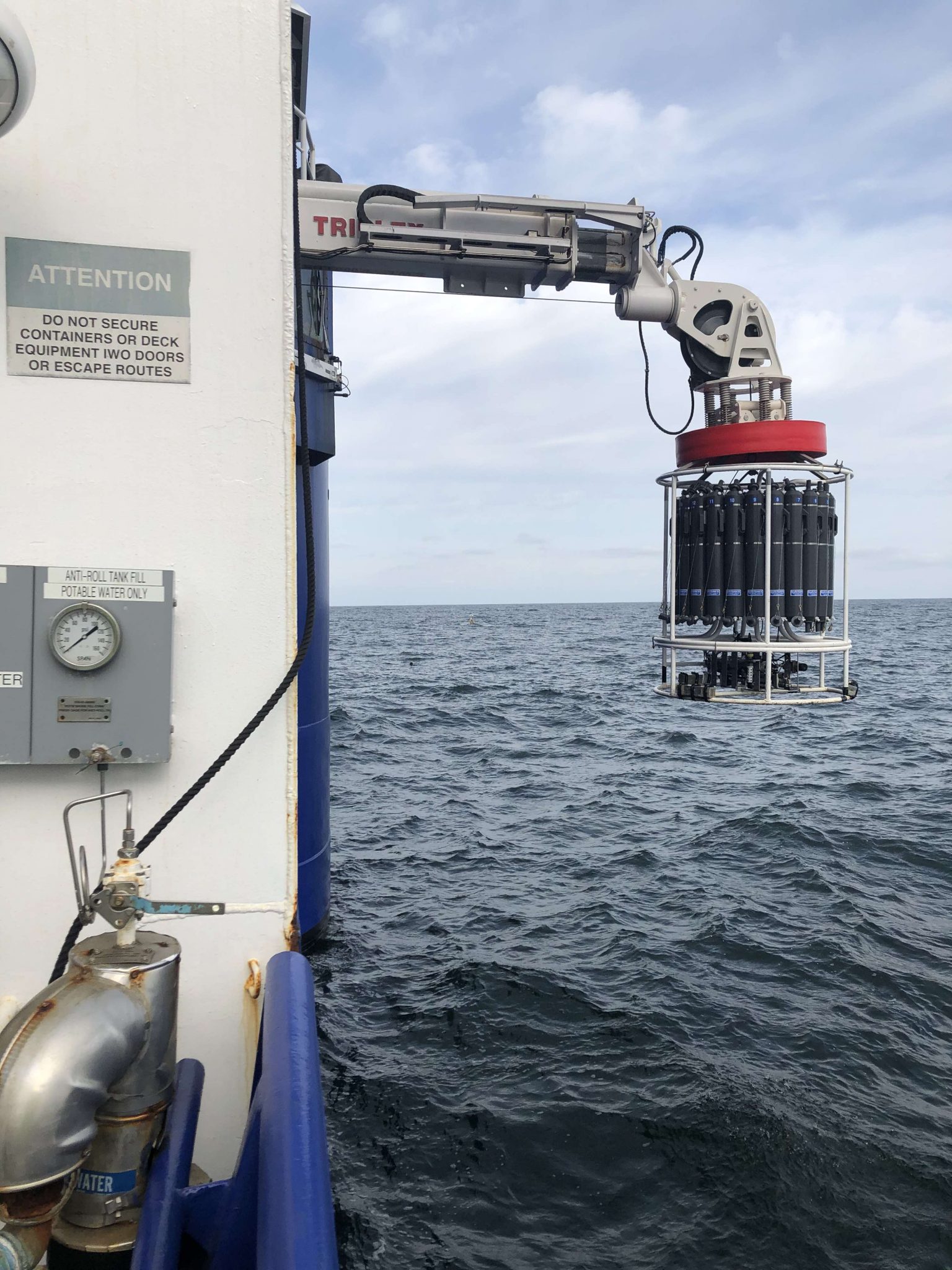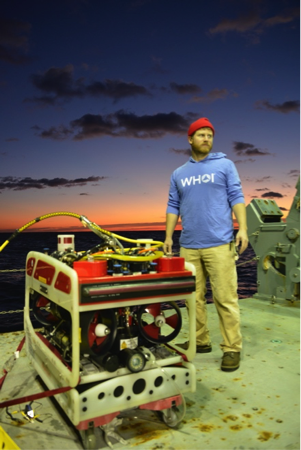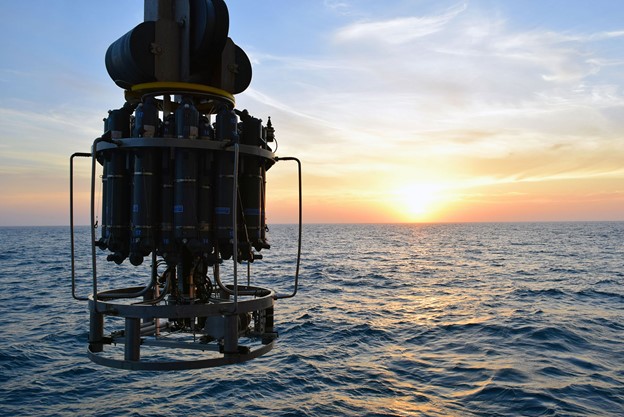Instrumentation
Sediment trap mooring
This image shows nearly all the equipment that comprises a typical sediment trap mooring. Syntactic buoys (yellow balls on left and ready for deployment), railroad wheel anchors (at stern), two sediment traps (yellow cylinders on right), mooring wire already spooled on winch. Missing from the photo are the acoustic releases, which can be seen in…
Read MoreFriendly float
This float is part of the sediment trap deployment. Someone added a smiley face to let sealife know that we mean no harm.
Read MoreSediment Trap
This is a McLane Mark VII 13 cup Sediment Trap, which is used to collect a time-series of material falling through the water column. The stack of three railroad wheels (on right) are the anchor.
Read MoreAcoustic Releases
Two Teledyne/Benthos R12K Acoustic Releases are connected in tandem as they await deployment. The Acoustic Releases are deployed as part of the anchor assembly for the sediment trap mooring. The R12K releases can be deployed in up to 12,000 meters of water for up to four years on a standard battery pack.
Read MoreProfiler Moorings
The Coastal Endurance Array includes five profiler moorings deployed inshore, at the shelf, and offshore. These moorings take measurements up and down the water column. The inshore and shelf surface piercing profilers allows for the sampling of near surface phenomena as the profiler travels through the water then breaches the surface. Fine resolution sampling of…
Read MoreSurface Moorings
During the Coastal Endurance 16 expedition, the team will deploy and recover six surface moorings, one profiler moorings, and recover three gliders. The team will also be conducting missions with gliders to take oceanographic observations in the vicinity of the moorings. These observations serve to validate observations at the moored sites, as well as expand…
Read MoreGliders
An array of ~6 gliders travels along five east-west transect lines within the Coastal Endurance Array from approximately the 20-m isobaths to 126 W (and out to 128 W along the Oregon and Washington lines), as well as a north-south transect along 126 W. They collect ocean observing data to supplement those collected by the…
Read MoreCTD Rosettes
An activity that happens on every Coastal Endurance cruise are CTD (Conductivity, Temperature, and Depth) casts. CTDs are used to collect water samples at the deployment and recovery sites to allow scientists to compare ship versus buoy meteorological measurements at surface mooring sites. This data is also important for calibrating other instruments on the moorings.
Read MoreRosette Recovered
The team was on deck as the sun came up to prepare a remotely operated vehicle (ROV) for a rescue mission. During an expedition earlier this summer aboard the R/V Neil Armstrong, a CTD rosette (pictured below) was lost. The Pioneer 17 cruise with its ROV onboard provided the perfect opportunity to recover the CTD.…
Read MoreInstruments Post 1
During the Pioneer 17 expedition, the team will deploy and recover three coastal surface moorings, deploy six and recover five coastal profiler moorings, and recover one glider. The team will also be conducting missions with autonomous underwater vehicles, pictured above, to take oceanographic observations in the vicinity of the moorings. These observations serve to validate…
Read More
